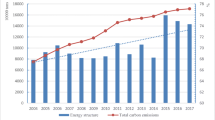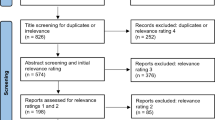Abstract
To overcome the drawbacks in estimating the rate of input substitution in existing econometric models, our paper is first to estimate the absolute/net rate of input substitution of capital and labor for energy in China’s industrial sector. Based on trans-log cost function with constant elasticity of substitution and combined MES method with technology progress and output effect, our paper finds a significant substitution relationship between labor and energy and an uncertain substitution relationship between capital and energy with some complementary characteristics. Furthermore, technology progress and output effect are found to have enhanced the substitution of labor for energy in the past 30 years. Based on these empirical findings, constructive suggestions are made concerning the medium and long-term development strategy of energy in China’s industrial sector.
摘要
针对以往用于估计要素替代率的经济模型存在的不足, 以超对数成本函数和不变替代弹性为基础, 把MES 模型与技术进步和产出效应结合起来, 首次估算了中国工业部门能源与资本及劳动之间的绝对替代弹性和净替代弹性(相对替代率), 发现劳动与能源之间存在明显的替代关系, 而资本与能源之间的替代关系呈现不确定性, 即资本与能源之间呈现间或的互补关系。此外, 实证研究还发现技术进步和产出效应在过去的近30 年中促进了劳动对能源的替代。最后根据实证研究, 对中国工业部门的能源中长期发展战略提出了建设性的建议。
Similar content being viewed by others
References
Berndt E R, Wood D O (1975). Technology, prices, and the derived demand for energy. The Review of Economics and Statistics, 57(3): 259–268
Berndt E, Wood D O (1975). Technology, prices and the derived demand for labor. Review of Economics and Statistics, 57: 376–384
Blackorby C, Russell R R (1981). The Morishima elasticity of substitution: Symmetry, constancy, separability, and its relationship to the Hicks and Allen elasticities. Review of Economic Studies, 48(1): 147–158
Blackorby C, Russell R R(1989). Will the real elasticity of substitution please stand up? American Economic Review, 79: 882–887
Field B C, Grebenstein C (1980). Capital-energy substitution in U.S. manufacturing. The Review of Economics and Statistics, 62(2): 207–212
Frondel M, Schmidt C M (2001). The capital-energy controversy: An artifact of cost shares? The Energy Journal, 23(3): 53–79
Griffin J, Gregory P (1976). An intercountry translog model of energy substitution responses. American Economic Review, 66: 845–857
Halvorsen R (1977). Energy substitution in U.S. manufacturing. The Review of Economics and Statistics, 59(4): 381–388
Hazilla M, Kopp R J (1984). A factor demand model for strategic nonfuel minerals in the primary metals sector. Land Economics, 60(4): 328–339
Hazilla M, Kopp R J (1984). A factor demand model for strategic nonfuel minerals in the primary metals sector. Land Economics, (60): 328–339
Hudson E A, Jorgenson D W (1978). Energy policy and U.S. economic growth. American Economic Review, 68(2): 118–123
Humphrey D B, Moroney J R (1975). Substitution among capital, labor, and natural resource products in American manufacturing. The Journal of Political Economy, 83(1): 57–82
Koetse M J, De Groot H L F, Florax R J G M (2006). Capital-energy substitution and shifts in factor demand: A meta-analysis. http://www.tinbergen.nl, 5–6
Nguyen S V, Reznek A (1993). Factor substitution in small and large U.S. manufacturing establishments. Small Business Economics, (5): 37–54
Pyrewes M A (1986). Nested CES approach to capital-energy substitution energy. Economics, (8): 22–28
Sickles R C, Streitwieser M L (1998). An analysis of technology, productivity, and regulatory distortion in the interstate natural gas transmission industry: 1977–1985. Journal of Applied Econometrics, 13(4): 377–395
Solow J L (1987). The capital-energy complementarity debate revised. American Economic Review,77(4): 605–614
戴维 罗默 (David Romer) (1999). 高级宏观经济学 (Advanced Macroeconomics) (苏 剑、 罗 涛译). 北京: 商务印书馆
郭 庆旺, 贾 俊雪 (Guo Qingwang, Jia Junxue) (2006). 中国全要素生产率的估算: 1979–2004 (Estimating Total Factor Productivity in China: 1979–2004). 经济研究, (6)
国家统计局 (National Statistical Bureau of China) (1980–2005). 中国统计年鉴 (China Statistical Yearbook). 北京: 中国统计出版社
何 枫, 陈 荣, 何 林 (He Feng, Chen Rong, He Lin) (2003). 我国资本存量的估算及其相关分析 (The estimation and correlation analysis on our country’s cumulative amount of capital). 经济学家, (5)
蒋 云赟, 任 若恩 (Jiang Yunyun, Ren Ruo-en) (2004). 中国工业的资本收益率测算 (The Rate of return of industrial capital in China). 经济学季刊, 3(4)
李 善同 (Li Shantong) (2001). 快速增长没有终结—中外专家看中国经济增长潜力 (No end for fast economic increasing—The increasing economic potential for China in the eyes of Chinese and foreign economists). 北京: 中国财政经济出版社
李 治国, 唐 国兴 (Li Zhiguo, Tang Guoxing) (2002). 中国平均资本成本的估算 (The Estimation of Capital Cost of China). 统计研究, (11):21–25
王 玲 (Wang ling) (2004). 中国工业行业资本存量的测度 (Estimates of capital stock on China’s industry). 世界经济统计研究, (1)
张 军 (Zhang Jun) (2002). 资本形成、工业化与经济增长: 中国的转轨特征 (Capital formation, industrialization and economic growth: Understanding China’s economic reform). 经济研究, (6)
张 军扩 (Zhang Junkuo) (1991). “七五”期间经济效益的综合分析—各要素对经济增长贡献率测算 (Comprehensive analysis on economic revenue in the Seventh Five-year-plan: Measurements on contribution ratio of economic growth from every factor). 经济研究, (4)
张 晓, 郑 玉歆, 裴 兰思 (zhang Xiao, Zheng Yuqing, Pei Lansi) (1995). 生产率研究中的资本投入替代度量 (Measurement of capital input on the productivity research). 数量经济技术经济研究, (3)
郑 照宁, 刘 德顺 (b) (Zheng Zhaoning, Liu Deshun) (2004). 考虑资本-能源-劳动投入的中国超越对数生产函数 (China’s trans-log production function using capital, energy and labor as input). 系统工程理论与实践. (5)
郑 照宁, 刘 德顺 (a) (Zheng Zhaoning, Liu Deshun) (2004). 中国能源资本替代的不确定性 (Uncertainty of capital—energy substitution in China). 运筹与맜理, 13(2)
朱 锦昌 (Zhu Jinchang) (2005). 缓解资源“ 瓶颈”, 坚持可持续发展 (Relax the bottleneck of natural resources to persist in sustainable development). 理论前沿, (6)
邹 至庄 (Gregory Chow) (2000). 2010年我国经济增长前景 (The perspective on China’s economic growth in 2010). 北京: 中国财政经济出版社
Author information
Authors and Affiliations
Corresponding author
Additional information
__________
Translated from Shuliang jingji jishu jingji yanjiu 数量经济技术经济研究 (The Journal of Quantitative & Technical Economics), 2008, (5): 30–42
About this article
Cite this article
Lu, C., Zhou, D. Industrial energy substitution and a revised Allen elasticity in China. Front. Econ. China 4, 110–124 (2009). https://doi.org/10.1007/s11459-009-0007-2
Published:
Issue Date:
DOI: https://doi.org/10.1007/s11459-009-0007-2




